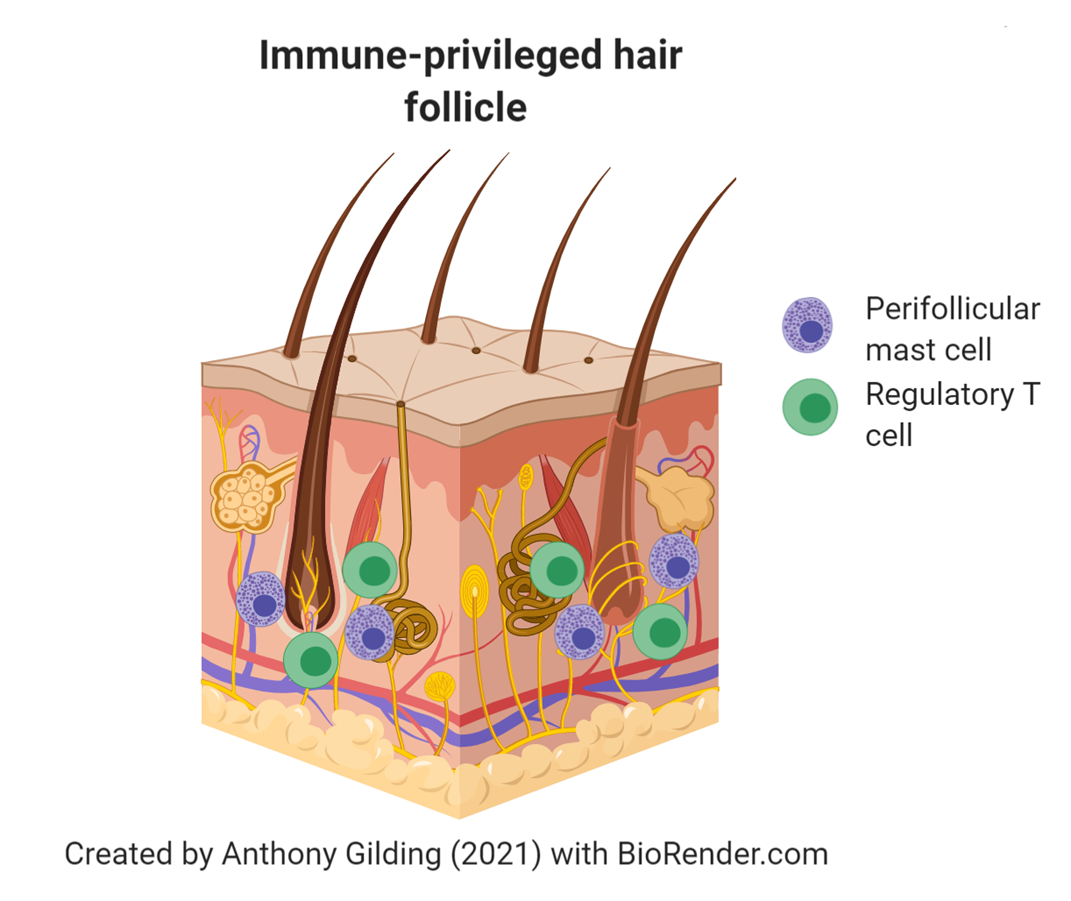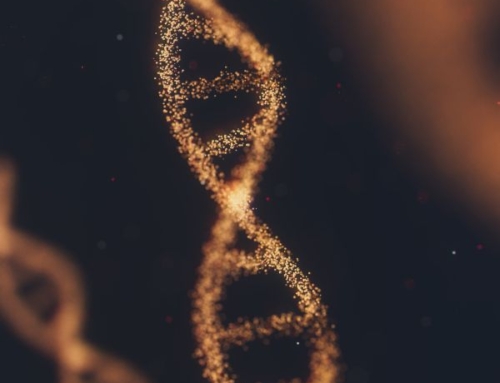Anthony Gilding, Science & Research Communication at CANAAF
As we learn more about alopecia areata we’re often told something along the lines of “much is still unknown about the disease”. This can be incredibly frustrating, particularly for individuals who are looking for treatment. The exact cause(s) of the disease are still largely unknown as there are likely many contributing factors – this is what makes curing alopecia areata so difficult.
Though we still don’t have all the answers, a recent article by Bertolini et al. (2020) proposed what occurs at the hair follicle level to initiate the disease.
The article by Bertolini et al. explains how the disease is in-part initiated by the collapse of our hair follicles’ immune privilege. Immune privilege is one of the many strict mechanisms employed by our body to protect us from a wrongful attack by our immune system. In other words, our hair follicles are normally “privileged” and exempt from strict surveillance and attack by the immune system.
Specialized cells, including perifollicular mast cells and regulatory T cells, monitor the hair follicles and protect them from autoimmune attack.

When immune privilege collapses, this means our hair follicles are no longer protected against autoimmune attack. This collapse may be indicated in other autoimmune skin diseases such as vitiligo.
After the collapse of immune privilege in the hair follicle, immune cells infiltrate and carry out specialized attacks on the hair follicle. This autoimmune attack causes inflammation which puts the hair follicle into a resting state, known as telogen phase. Once in the resting state, the hair follicles lose their hair, and lose their ability to regrow hair until the autoimmune attack is stopped.
Now that we understand immune privilege collapse in the hair follicle likely initiates alopecia areata, the next logical question is,
What causes this to happen? How do hair follicles suddenly lose their immune privilege and become susceptible to autoimmune attack?
You may not be surprised to know that we don’t have the full answer to this. The most likely culprit is a culmination of things, including epigenetic factors, which are external influences such as environmental toxins and certain infections.
In order to effectively cure alopecia areata, we would need to first fully understand what triggers the disease initiation, and the specific mechanisms involved in the disease pathogenesis. With this information we can begin to investigate ways to inhibit or reverse the disease at the cellular and molecular level.
This has been in the works since the discovery of JAK inhibitors being effective in regrowing hair, which has led us to understand that the JAK/STAT pathway is involved in the disease mechanism. We could also potentially find ways to test for susceptibility and prevent the development of alopecia areata if we can establish the specific triggers.
These are large tasks to tackle, and they will inevitably take time to complete. Research is often a quiet process – most people don’t know it is happening until the results are published and translated into clinical solutions. As such, you can rest assured that biomedical research is currently underway globally to further understand the inner workings of alopecia areata.





